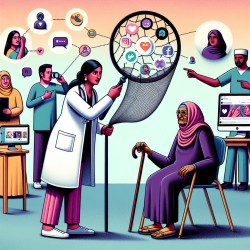Introduction
In the realm of healthcare, particularly in managing conditions like Sudden Cardiac Arrest (SCA), the importance of effective patient education cannot be overstated. A recent systematic evaluation by the Sudden Cardiac Arrest Thought Leadership Alliance has shed light on the current state of patient educational tools related to SCA, revealing significant gaps in quality and effectiveness. This blog post aims to explore these findings and suggest ways practitioners can enhance their educational strategies to improve patient outcomes.
Understanding the Research
The study evaluated 18 educational tools designed for patients at risk of SCA and those considering implantable cardioverter defibrillators (ICDs). The tools were assessed on content, development, and effectiveness using a structured instrument based on the International Patient Decision Aids Standards (IPDAS). The findings were sobering: none of the tools were rated as "very good" or "excellent," with most requiring significant revisions.
Key Findings
- Only four tools were deemed "good, may need revisions, but sufficient for use."
- 12 tools were rated as "marginal, needs revision prior to use."
- Two tools were rated as "poor, inadequate for use."
Notably, the study highlighted a lack of structured guidance in deliberation and communication, insufficient use of plain and culturally appropriate language, and a failure to effectively help patients recognize the need for timely decision-making.
Implications for Practitioners
For practitioners, these findings underscore the need for a more robust approach to patient education. Here are some actionable steps:
- Enhance Content Quality: Ensure educational materials provide comprehensive information about treatment options, risks, benefits, and alternatives.
- Improve Communication: Use plain language and culturally sensitive materials to ensure understanding across diverse patient populations.
- Facilitate Decision-Making: Develop tools that guide patients through the decision-making process, emphasizing the importance of values and preferences.
Encouraging Further Research
While the study provides a critical assessment of current tools, it also opens avenues for further research. Practitioners are encouraged to participate in developing and testing new educational tools that address the identified gaps. Collaborating with multidisciplinary teams can lead to innovative solutions that better meet patient needs.
Conclusion
Improving patient education tools is crucial for empowering patients and enhancing healthcare outcomes. By addressing the gaps identified in the research, practitioners can play a pivotal role in advancing patient-centered care. To delve deeper into the original research, please follow this link: Assessment of the quality of existing patient educational tools focused on sudden cardiac arrest: a systematic evaluation by the Sudden Cardiac Arrest Thought Leadership Alliance.










